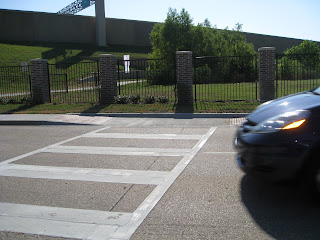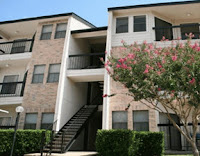One of my clients asked me yesterday why isn’t there just one accessibility standard rather than having so many to follow….If I knew the answer to that I could probably cause Peace on earth….
But alas, since there are so many all I can do is help you to figure out which standard to use when.
ADA Standards
The ADA applies to facilities in the private sector (places of public accommodation and commercial facilities) and to state and local government facilities. Standards issued by the Department of Justice (DOJ) apply to all ADA facilities except transportation facilities, which are subject to standards maintained by the Department of Transportation (DOT). DOJ is in the process of adopting new ADA standards, and further information on this update is available on DOJ’s website . DOT has adopted new ADA standards which apply to bus stops, rail stations, and other transportation facilities.
For commercial facilities and places of public accommodations in the private sector use The ADAAG 1991 version
For State and Local Government Facilities (except transportation facilities) use the ADAAG 1991 version or The Uniform Federal Accessibility Standards (UFAS)
The ADA Standards for Transportation Facilities deal with Transportation Facilities
ABA Accessibility Standards
The ABA applies to federally funded facilities. The General Services Administration (GSA) updated its ABA standards, which apply to most facilities covered by the ABA. Similar standards have been adopted by the U.S. Postal Service (USPS) for postal facilities and by the Department of Defense for military facilities. The Department of Housing (HUD) is in the processing of updating its ABA standards, which apply to federally funded residential facilities.
For Federal Facilities (other than postal, housing, and military facilities) use the GSA’s AB Standards
For Postal Services facilities use the USPS ABA Accessibility Standards (also known as the RE-4 Standards)
For Military facilities use the Department of Defense ABA Accessibility Standards
Federally funding Housing use UFAS (but in the new standards this will be replaced by HUD’s standards)
State and Local Accessibility Standards
Even though the ADAAG is a Federal law, each State and local municipality is allowed to adopt this or any other accessibility standard also. The Access Board has a list of all the States and what Accessibility Standards they adopted
Note: A few friends on LinkedIn have sent me these corrections:
The Connecticut information listed is obsolete. The correct information is as follows:
Access Code- 2003 International Building Code Portion of the 2005 State Building Code of Connecticut- as amended on 2009 )
Washington State’s code listing on the Access Board site is obsolete as well. WA has adopted the 2006 IBC/2003 ANSI and will shift to 2009 IBC/2003 ANSI in late July.
Multi-Family housing
The Housing and Urban Development office of the Federal Government has developed the Fair Housing Act Section 504 that deals with the discrimination of people with disabilities as it pertains to their renting or owning an apartment or dwelling unit. There is a great handbook that they created that shows you graphically how to apply the Fair Housing Act Section 504
Public Rights of Way

Sidewalks, street crossings, and other elements of the public rights-of-ways present unique challenges to accessibility for which specific guidance is considered essential. The Board is developing new guidelines for public rights-of-way that will address various issues, including access for blind pedestrians at street crossings, wheelchair access to on-street parking, and various constraints posed by space limitations, roadway design practices, slope, and terrain. The new guidelines will cover pedestrian access to sidewalks and streets, including crosswalks, curb ramps, street furnishings, pedestrian signals, parking, and other components of public rights-of-way. Here is the draft of those standards Public Rights-of-way
There are others that are covered by the guidelines like parks, outdoor recreation facilities, prisons and more. Check out the Access Board’s website and the ADA’s website for more information
I purchased a book two weeks ago, called Understanding the Americans with Disabilities Act, 3rd Edition by Willam D. Goren (published by the American Bar Association). I was expecting it to be about Title III (design and construction of commercial facilities and places of public accommodations). But as it turned out it was about the Civil Rights law of the ADA written by a lawyer who is deaf but with hearing aids and lip reading functions entirely in the hearing world. How interesting. He cites cases and examples on how law suits come about in the ADA arena. I was so impressed that I asked him to be a guest blogger for Abadi Accessibility News. here is what he had to say:
Title III of the Americans with Disabilities Act applies to “places of public accommodations.” A place of public accommodation can be any of 12 different categories including:
1) places of lodging;
2) establishments serving food and drink;
3) places of exhibition and entertainment;
4) places of public gathering, such as a Museum or library;
5) sales or rental establishments;
6) service establishments;
7) specified public transportation, such as terminals and depots;
8) public display or collection;
9) places of recreation (parks, etc.);
10) places of education;
11) social service center; and
12) places of exercise or recreation (athletic in nature) (42 U.S.C.A. § 12181(7)).
The list is not meant to be exclusive the rather sets forth the examples. What is interesting about title III of the Americans with Disabilities Act is that the only remedies available are injunctive relief, attorneys fees, and the court, in its discretion, can impose civil penalties.(42 U.S.C.A. § 12188; 28 C.F.R. § 36.504).
Nevertheless, there has been substantial litigation with title III of the ADA over the years. A hot issue today is whether a business that has an Internet site must have its Internet site accessible to persons with disabilities. I wrote an article in the DuPage County Bar Journal, The Brief, about it and here is the link In short, if you do have a website, you would do well to make sure that it is accessible to people with disabilities (people who use voice dictation technology, screen readers, etc.) when you investigate that, you will find that ensuring that it is accessible to people with disabilities is not going to be nearly as expensive or as hard to accomplish as you think.
William D. Goren, J. D. LL.M., is currently an Instructor and the Paralegal Program Coordinator at South Suburban College in South Holland, Illinois with a campus in Oak Forest as well, where he teaches business law, evidence, legal research and writing, and the Americans with Disabilities Act. He is also the author of the book, Understanding the Americans With Disabilities Act, now in its Third Edition, from the American Bar Association In addition to his books, he is a frequent presenter and also the author of numerous articles, most but not all of which pertain to the rights of persons with disabilities. His latest articles have appeared in the DuPage County Bar Journal (The Brief), and the Illinois State Bar Association publication, Diversity Matters. When he is not teaching, he consults (www.williamgoren.com ), including but not limited to providing expert witness services and educational programming on the Americans with Disabilities Act of 1990 as amended and the Rehabilitation Act of 1973. Mr. Goren is a licensed attorney in both Illinois and Texas. He received his B.A. from Vassar College, his J.D. from the University of San Diego, and his LL.M. in Health Law from Depaul University.
When we design schools, dressing rooms or transportation facilities that have lockers we have to think about the 5% of the lockers which have to be accessible. Not only do we have to provide room for wheel chairs, and a bench for transferring, but we also must remember to make the operating mechanism accessible. That means that we have to provide a mechanism that can be operated without tight grasping or twisting of the wrist to operate.
The following video explains this for a product (Key 1636) that provides a key large enough to act like a lever. It is very interesting!
 Abadi
Abadi 






.jpg)
